The 20th
LaureatePainting
Richard Hamilton
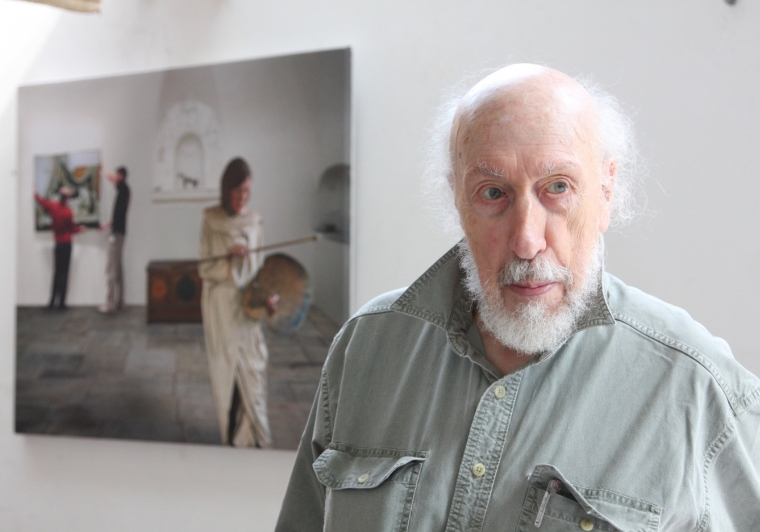
Born in London in 1922. Made his debut as an artist after attending several art schools. In 1956,he produced the collage Just what is it that makes today’s homes so different,so appealing? to launch the pop art era ahead of the American pop artists. Since then,he has remained creative in numerous genres such as woodblock prints,collage and design. Inspired by French-born artist Marcel Duchamp,champion of iconoclastic "anti-art" Hamilton’s work sometimes contains political messages; recently,he criticized British involvement in Iraq with Shock and Awe,showing former Prime Minister Tony Blair in a cowboy-style gunman pose. Hamilton’s studio in Oxfordshire is kitted out with a large printer and several computers,and even at the age of 86,his enthusiasm for creativity shows no sign of waning.
Biography
In 1950s Britain,Richard Hamilton was already producing collages that are considered to be the first works of pop art,well ahead of American pop artists Robert Rauschenberg and Andy Warhol. Over a half century since then,Hamilton has continued to work in a variety of genres,including woodblock prints,collage and design.
Richard Hamilton was born in London and attended a number of art schools before making his debut as an artist. He played an important role in the "Independent Group",a gathering of artists,architects,designers and critics in 1950s London. With his collage Just what is it that makes today’s homes so different,so appealing? ,(1956),produced for the Group’s "This Is Tomorrow" exhibition,he established himself overnight as the "founding father"of pop art. The collage,originally designed as a poster,depicts a living room filled with household electrical appliances,advertisements and other symbols of mass consumerism,dominated by a posing bodybuilder.
At the time,Hamilton defined pop art as "popular,transient,expendable,low-cost,mass-produced,young,witty,sexy,gimmicky,glamorous,big business". He still stands by that statement today,saying "I think that evaluation was very accurate...the interestingthing is that has become accepted by so many artists".
Hamilton’s works deal predominantly with mass media culture and consumer society. Are they meant to glorify contemporary culture and art,or to satirize it? Hamilton replies that they are neither,preferring to remain neutral. His works are often commented as an "affirmation of reality".
Among his inspirations,Hamilton names French-born artist Marcel Duchamp,the iconoclastic champion of "anti-art" He even attempted to "reconstruct" some of Duchamp’s glass objects. Some of his other works,depicting consumer items like automobiles and stars like Marilyn Monroe or Mick Jagger,also reveal iconoclastic traits reminiscent of Duchamp.
Hamilton sometimes uses his works to make political comments. This summer,he exhibited Shock and Awe ,a work showing former Prime Minister Tony Blair as a cowboy ready to fire from the hip with both hands,at a small gallery in Edinburgh,Scotland. This is a clear comment on Blair’s decision to join the Bush-led invasion of Iraq.
Though he has described himself recently as a "hermit",he has been increasing his output using computers. His home-based studio,converted from a large farm in Oxfordshire,is kitted out with a large printer and several computers. Even at the age of 86,his enthusiasm for creativity shows no sign of waning.
He passed away on September 13,2011,England
Chronology
Designed sleeve and inserts for the Beatles' The White Album
-
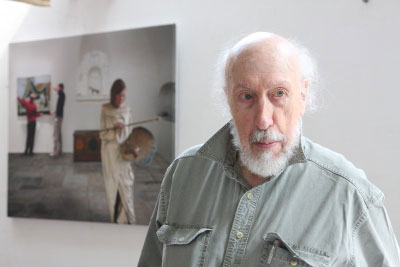
Richard Hamilton at his studio
-

Richard Hamilton at his studio
-
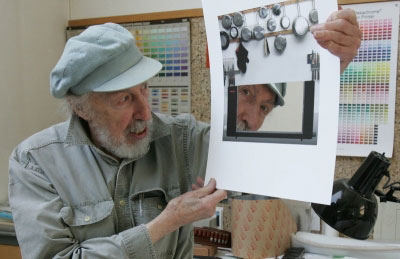
Richard Hamilton at his studio
-
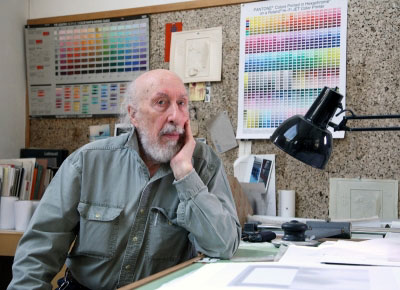
Richard Hamilton at his studio
-
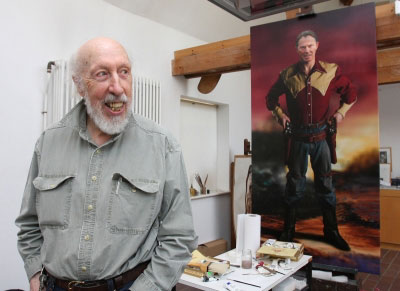
At his Studio Shock and Awe
